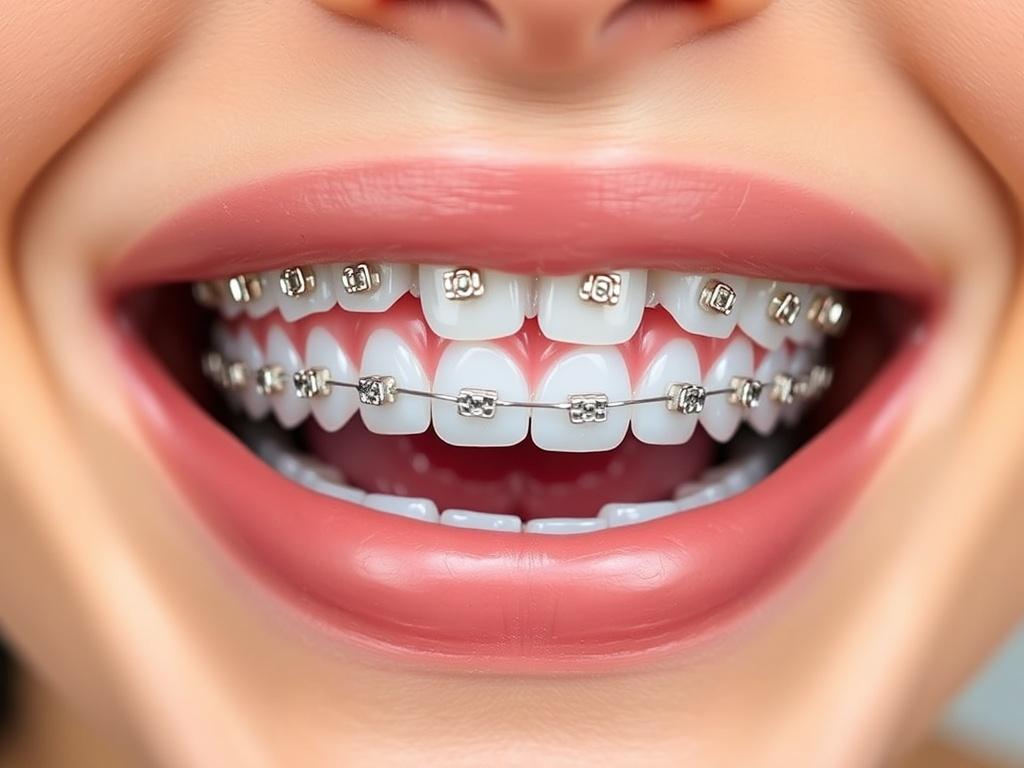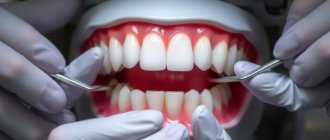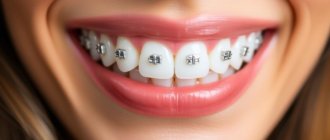When it comes to straightening teeth, many people immediately picture the traditional metal braces — the ones that sit front and center on your teeth, sometimes making you feel self-conscious about your smile during treatment. But what if there was a way to achieve the same straight, healthy teeth without anyone ever seeing those braces? That’s where lingual braces come into play. These hidden teeth straightening devices are quietly changing the game for dental patients looking for an invisible option. In this article, we will explore what lingual braces are, how they work, their advantages and disadvantages, how they compare to other straightening methods, and what to expect during treatment.
Содержание
- 1 What Are Lingual Braces?
- 2 How Do Lingual Braces Work?
- 3 Advantages of Lingual Braces
- 4 Challenges and Considerations with Lingual Braces
- 5 Lingual Braces vs. Other Straightening Options
- 6 Who Are Lingual Braces Best Suited For?
- 7 What to Expect from Lingual Braces Treatment
- 8 Tips for Living with Lingual Braces
- 9 Cost Breakdown of Lingual Braces
- 10 Common Myths About Lingual Braces
- 11 Patient Experiences with Lingual Braces
- 12 Maintaining Your Smile After Lingual Braces
- 13 Final Thoughts on Lingual Braces: Hidden Teeth Straightening
What Are Lingual Braces?
Lingual braces are a type of orthodontic treatment designed to straighten teeth from behind. Unlike traditional braces that are attached to the front surfaces of your teeth, lingual braces are custom-made metal brackets bonded to the back (lingual side) of your teeth. This makes them virtually invisible when you smile, talk, or laugh, which is why many adults and teens prefer them as a discreet alternative.
The word “lingual” itself refers to the tongue side of your teeth, highlighting their hidden placement. Despite their hidden nature, lingual braces are just as effective as traditional braces in correcting common dental issues like overcrowding, gaps, overbites, underbites, and crooked teeth.
How Do Lingual Braces Work?
Lingual braces work similarly to regular braces but with some key differences in design and application. The brackets are custom-made in a dental lab to fit the unique contours of the back of each patient’s teeth, ensuring comfort and effectiveness.
Once placed, these brackets are connected by archwires that apply gentle, continuous pressure to gradually move the teeth into their ideal positions. Your orthodontist adjusts the wires periodically to maintain the right amount of pressure throughout your treatment.
Because lingual braces are customized and installed behind the teeth, the fitting process requires specialized training and can be more complex than traditional braces. But the payoff is worth it — a straight smile discreetly achieved without the braces showing.
Advantages of Lingual Braces
There are many reasons why someone might choose lingual braces over conventional metal braces or clear aligners. Here are some of the top benefits:
- Completely Invisible: The biggest appeal is their hidden placement, making lingual braces ideal for anyone who wants to straighten their teeth without others noticing.
- Effective for Complex Cases: Lingual braces correct a wide range of dental problems, including severe misalignments that clear aligners might not adequately address.
- No Risk of Front Tooth Decalcification: Since brackets are behind the teeth, the front enamel remains free from white spots or discoloration sometimes caused by traditional braces.
- Custom Fit Leads to Better Results: Each bracket is tailored to your teeth’s shape, potentially improving treatment precision and comfort.
- Eating Habits Are Less Restricted: While you still should avoid extremely hard or sticky foods, the hidden braces are less likely to get in the way of biting into foods like apples or sandwiches.
Challenges and Considerations with Lingual Braces
As with any orthodontic treatment, lingual braces come with some challenges. Understanding these will help you decide if they’re the right teeth straightening option for you.
- Initial Discomfort and Speech Adjustment: Many patients experience a temporary lisp or difficulty speaking clearly when they first get lingual braces. This happens because the braces sit close to the tongue and can affect its movement. Fortunately, most adapt within a few weeks.
- Cost: Lingual braces often cost more than standard braces or clear aligners because of the customization and specialized orthodontic skills required.
- Longer Appointment Times: Adjusting lingual braces can be more time-consuming for orthodontists, resulting in slightly longer visits.
- Cleaning Challenges: While cleaning braces is never a breeze, lingual braces can be trickier to brush and floss because of their position, so maintaining excellent oral hygiene is essential.
- Not Suitable for All Cases: Certain severe misalignments might be better treated with other appliances or combined dental treatments.
Lingual Braces vs. Other Straightening Options
Choosing the best orthodontic method involves considering your lifestyle, treatment goals, budget, and personal preferences. Let’s look at how lingual braces compare with other popular treatments:
| Treatment | Visibility | Effectiveness | Comfort | Cost | Maintenance |
|---|---|---|---|---|---|
| Lingual Braces | Invisible (behind teeth) | Highly effective for complex cases | Initial tongue discomfort; adapts over time | High | Challenging oral hygiene; regular professional care needed |
| Traditional Metal Braces | Very visible (front teeth) | Highly effective | Can cause irritation to cheeks and lips | Moderate | Requires careful cleaning |
| Clear Aligners (e.g., Invisalign) | Nearly invisible | Effective for mild to moderate cases | Generally comfortable | Moderate to high | Must be worn 20-22 hours/day; requires discipline |
| Ceramic Braces | Less visible than metal braces | Effective | Similar to metal braces | Moderate to high | Requires careful cleaning to prevent staining |
Who Are Lingual Braces Best Suited For?
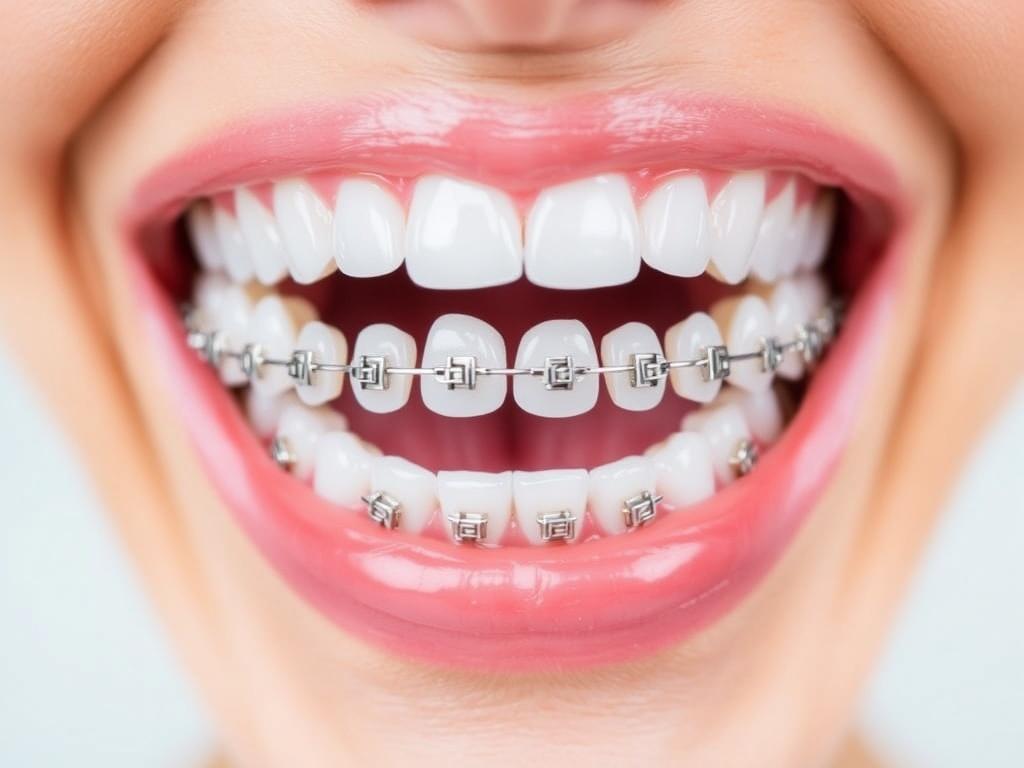
Lingual braces are a great option for individuals who want the effectiveness of traditional braces without the aesthetic drawbacks. They are especially popular among:
- Adults in Professional Settings: Those who interact regularly with clients or colleagues and want to maintain a natural, confident appearance during treatment.
- Teens Seeking Discretion: Self-conscious teenagers who want to avoid teasing or unwanted attention may find lingual braces a perfect fit.
- Individuals with Complex Alignment Issues: Lingual braces can correct cases that clear aligners might struggle to manage effectively.
- Performers or Public Speakers: People in professions where appearance matters but speech can adapt quickly often choose lingual braces despite the initial adjustment period.
What to Expect from Lingual Braces Treatment
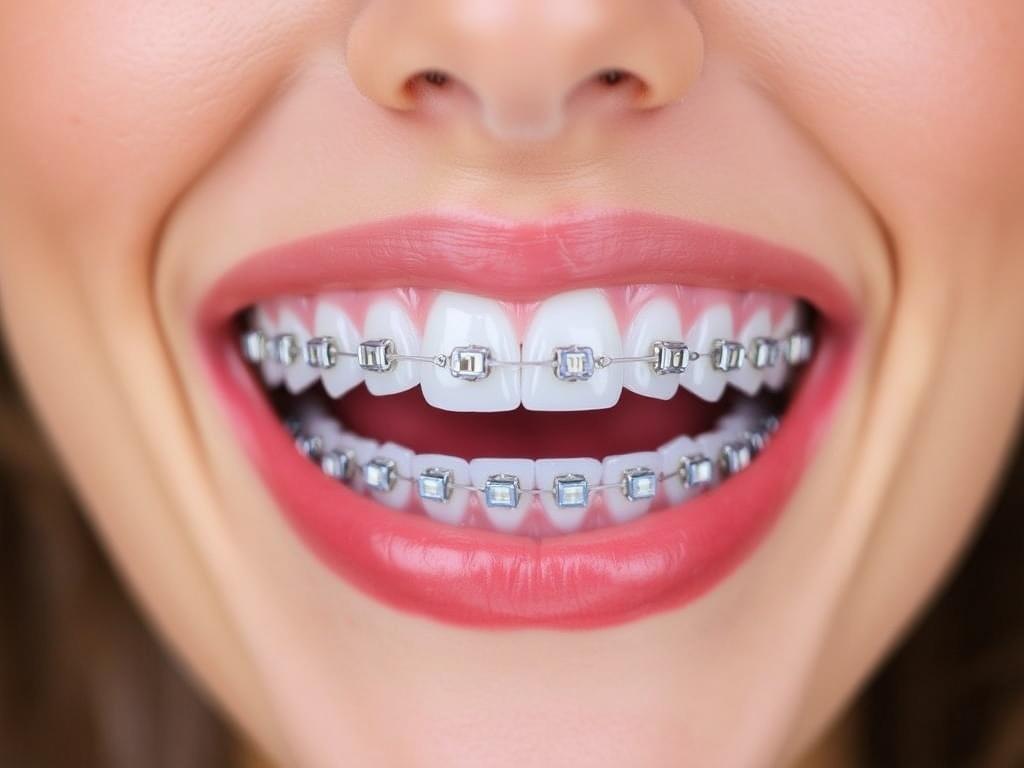
The journey with lingual braces unfolds in several stages:
1. Initial Consultation and Assessment
Your orthodontist will examine your teeth, bite, and jaw alignment through X-rays, photos, and impressions. This helps determine if lingual braces are suitable for your needs.
2. Custom Bracket Fabrication
Once you decide on lingual braces, custom molds of your teeth are sent to a specialized lab that designs individualized brackets fitted precisely to your dental anatomy.
3. Bonding and Installation
The orthodontist carefully bonds the unique brackets to the back of your teeth, making sure each one aligns perfectly with the natural contours for comfort and function.
4. Adjustment Appointments
At regular intervals, your orthodontist tightens or adjusts the wires to ensure consistent tooth movement. These visits might take longer than standard braces due to the braces’ location.
5. Oral Hygiene Maintenance
Maintaining excellent oral hygiene is vital throughout treatment. Using special brushes, floss threaders, and sometimes water flossers makes cleaning easier with lingual braces.
6. Treatment Completion and Retainers
Once your teeth are aligned, the braces are removed, and retainers are provided to keep your new smile in place.
Tips for Living with Lingual Braces
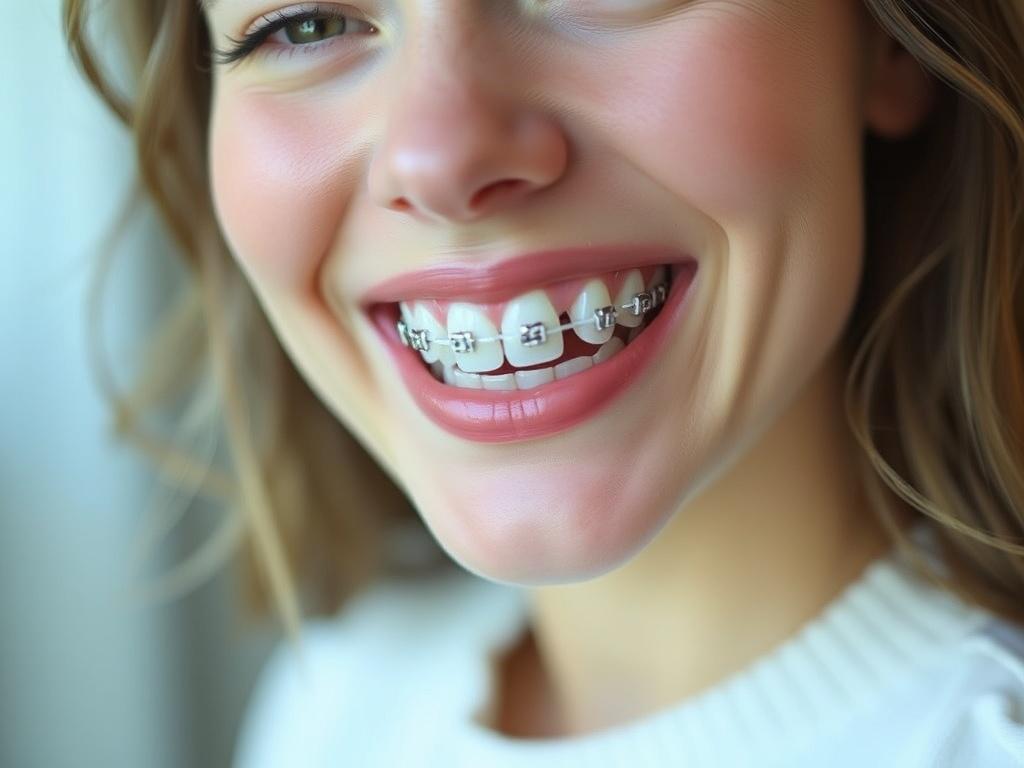
Adapting to lingual braces can be easier with some handy tips:
- Practice Speaking Slowly: The initial lisp often improves with slow, deliberate speech exercises.
- Use Orthodontic Wax: If the brackets irritate your tongue, applying wax creates a smooth surface and reduces soreness.
- Stay on Top of Oral Hygiene: Invest in interdental brushes and make flossing a habit to avoid plaque buildup.
- Avoid Certain Foods: Hard candies, chewing gum, and sticky sweets can damage braces; sticking to soft foods eases the adjustment.
- Be Patient: Most discomfort and speech challenges diminish within a few weeks as your mouth adjusts.
Cost Breakdown of Lingual Braces
Understanding the cost is crucial when weighing your orthodontic options. Lingual braces often carry a premium price tag due to their complexity and custom construction. Here’s an approximate cost comparison to give you an idea:
| Orthodontic Treatment | Average Cost (USD) | Insurance Coverage |
|---|---|---|
| Lingual Braces | $8,000 – $10,000 | Partial, varies by plan |
| Traditional Metal Braces | $3,000 – $7,000 | Partial to full, varies by plan |
| Clear Aligners | $4,000 – $7,500 | Partial, varies by plan |
Keep in mind the exact price depends on treatment duration, geographic location, orthodontist expertise, and whether your insurance plan offers orthodontic benefits.
Common Myths About Lingual Braces
There are several misconceptions floating around about lingual braces, which may deter some from choosing them. Let’s clear up a few of the most common:
- Myth: Lingual Braces Are Only for Minor Adjustments. Truth: Lingual braces can handle both mild and complex orthodontic issues effectively.
- Myth: Lingual Braces Are Extremely Painful. Truth: While some initial discomfort happens, it’s quite similar to traditional braces and diminishes with time.
- Myth: Lingual Braces Make It Impossible to Speak Clearly. Truth: Most patients adapt quickly, and speech issues are temporary.
- Myth: Lingual Braces Aren’t Covered by Insurance. Truth: Many insurance plans include lingual braces under orthodontic coverage; it’s best to check with your provider.
Patient Experiences with Lingual Braces
Hearing from those who have walked the path can offer valuable insights. Many lingual braces users share stories of initial challenges followed by satisfaction with the discreet treatment. One patient said, “I was wary because of the lisp at first, but after a few weeks, no one even knew I had braces. The results were worth every bit of the adjustment.” Another mentioned that the custom fit made the braces feel less bulky than expected.
Maintaining Your Smile After Lingual Braces
Once lingual braces come off, maintaining your newly straightened teeth is essential. Retainers are usually prescribed, which should be worn as instructed by your orthodontist to prevent teeth from shifting back. Daily oral care, regular dental visits, and prompt attention to any dental concerns will keep your smile healthy and bright for years.
Final Thoughts on Lingual Braces: Hidden Teeth Straightening
Lingual braces offer an innovative and effective solution to achieving a perfectly straight smile while keeping the orthodontic process discreet and hidden. Their unique placement behind the teeth appeals especially to those who are concerned about the appearance of traditional braces but need comprehensive and reliable treatment. Like any orthodontic option, they require an investment of time, patience, and money but offer impressive results that can last a lifetime. If you’re ready to embrace hidden teeth straightening that combines function with aesthetics, lingual braces might just be the perfect choice for you. Always consult with a qualified orthodontist who can guide you through the specifics and tailor a plan that suits your unique smile journey.
Conclusion
Hidden behind your teeth and out of sight from the world, lingual braces are quietly transforming how people think about orthodontics. Offering the same powerful results as traditional braces while allowing you to smile confidently throughout the process, these hidden teeth straightening devices blend innovation with discretion. Although they come with some challenges — including initial speech adjustment and higher costs — many find the benefits far outweigh the downsides. Whether you’re a professional seeking an invisible option, a teen wanting to avoid the spotlight, or anyone desiring a flawless smile without exposing braces to the world, lingual braces present an exciting alternative. With proper care, expert guidance, and a bit of patience, lingual braces can help you achieve that beautifully aligned smile you’ve always wanted — without anyone ever knowing you’ve had braces at all.

